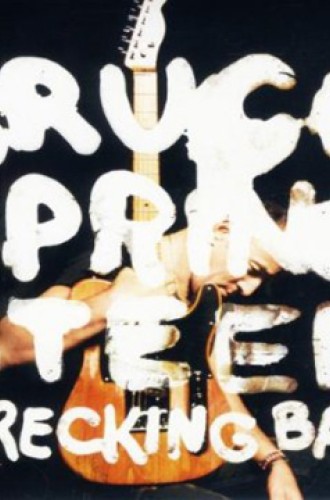Wrecking Ball, by Bruce Springsteen
On the cover of Wrecking Ball, Bruce Springsteen holds his iconic Fender Esquire guitar, the same ax he sported on his 1975 masterpiece Born to Run. Back then, saxophonist Clarence Clemons stood to his left, coaxing an impish grin from the young rocker. Now, on his first disc since Clemons’s death, Bruce stands solitary and sullen against a black backdrop.
At junctures, Springsteen finds morning in the heart of mourning. “Death to My Hometown” tips its hat to the Occupy movement, melting an Irish reel and South African chanting into an infectious stomp-along.
On the title track, Springsteen addresses life’s impermanence amid the drive to carry on. But he doesn’t say where the drive comes from; he sticks with macho flexing: “Bring on your wrecking ball / C’mon and take your best shot.” What’s more, the sonic adventurousness of “Hometown” is reduced on “Wrecking Ball” to a mishmash of country pop and standard arena-rock Springsteen.
“Land of Hope and Dreams” also dishes up the subject matter and E Street band sound that fans expect, and it’s exhilarating to hear Clemons blow his sax one last time. The song encapsulates what drives (or otherwise derails) Wrecking Ball as a whole: Springsteen seeks to expand his vision by making his sound even bigger, his narratives cinematically ambitious on a scale not seen since Born to Run. But “Dreams” succeeds not in its bombastic moments but rather in its most sublime ones, as when the coda quiets down into Springsteen quoting the Impressions: “Don’t need no ticket, you just thank the Lord.” It’s a tasteful setup for the album closer “We Are Alive,” on which Springsteen invokes martyrs in the cause of justice. This track pulls out all the stops, from timpani rolls to a gospel choir and a horn line that sounds very close to the one that propelled Johnny Cash’s “Ring of Fire.”
Springsteen said in 2005 that he wanted Born to Run to sound like a B-movie set to music. In this he succeeded mightily, breathing new life into tired clichés of rock, rebellion and redemption. Wrecking Ball has more the style of a would-be blockbuster, often sacrificing intimacy for super-sized scope. Perhaps that’s to be expected—Springsteen was a 25-year-old desperado when he made Born to Run, and since then he’s spent more years than that as an outsized rock star.
He devotes much of Wrecking Ball to giving voice to the voiceless, from “the man who mows your lawn” to a forlorn believer searching for Christ in the silence (“Rocky Ground”). That’s admirable.
Yet as its title suggests, the album isn’t a subtle affair. Look again, and you’ll see echoes of another album cover: Bruce’s physique looks as pumped up here as it did on Born in the U.S.A. But there is strength in weakness, and more broken-heart brittleness would be welcome here.





